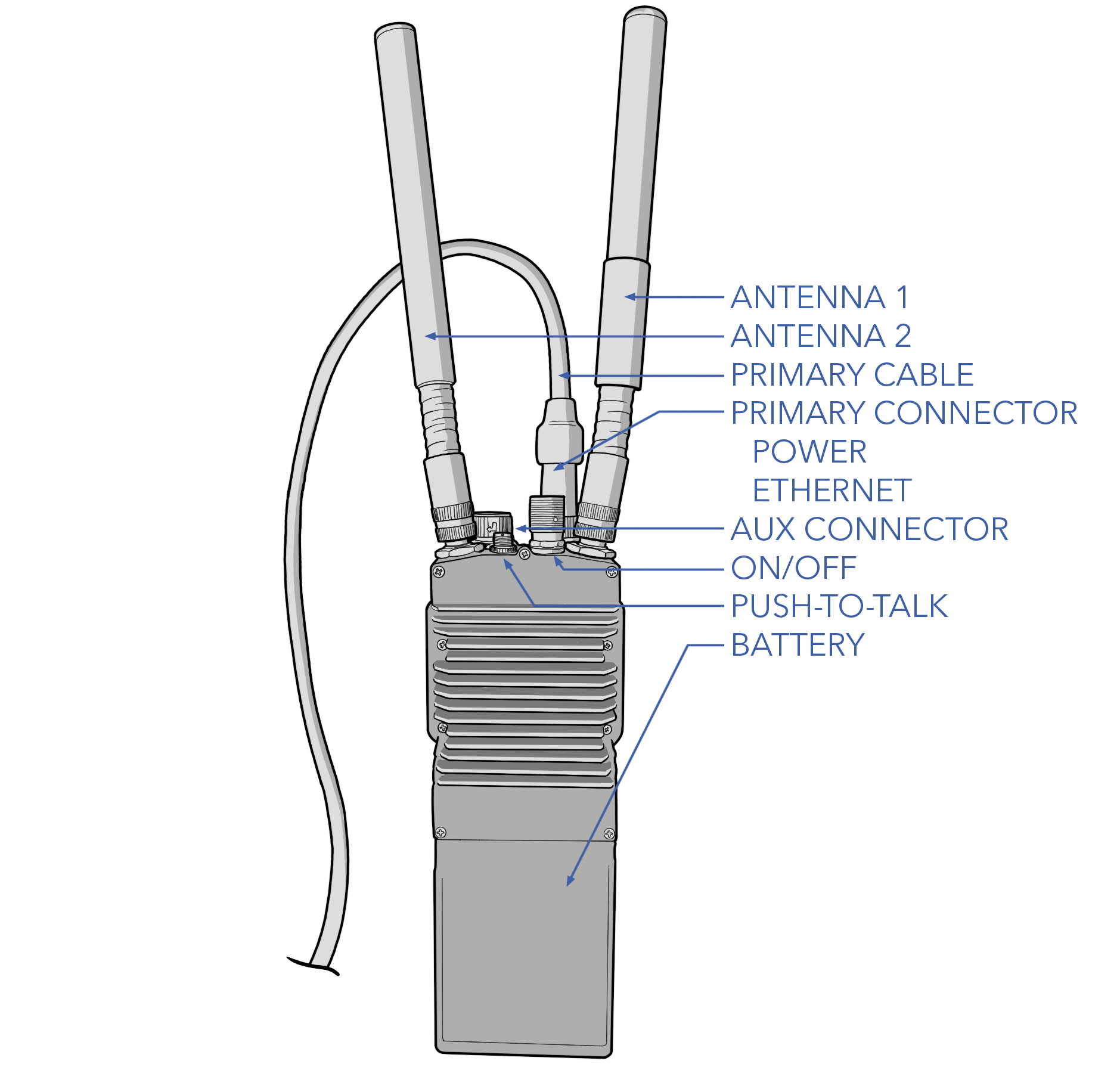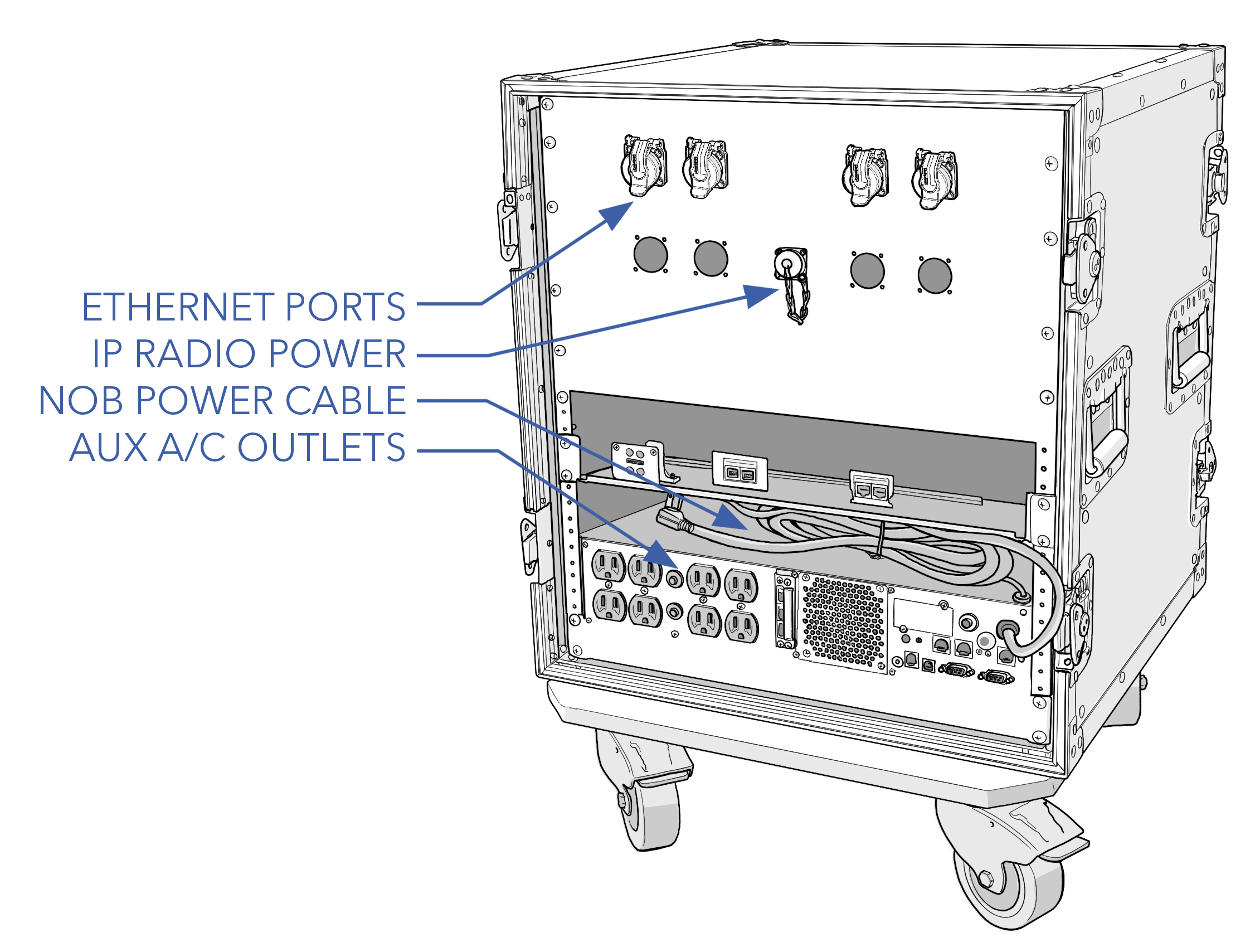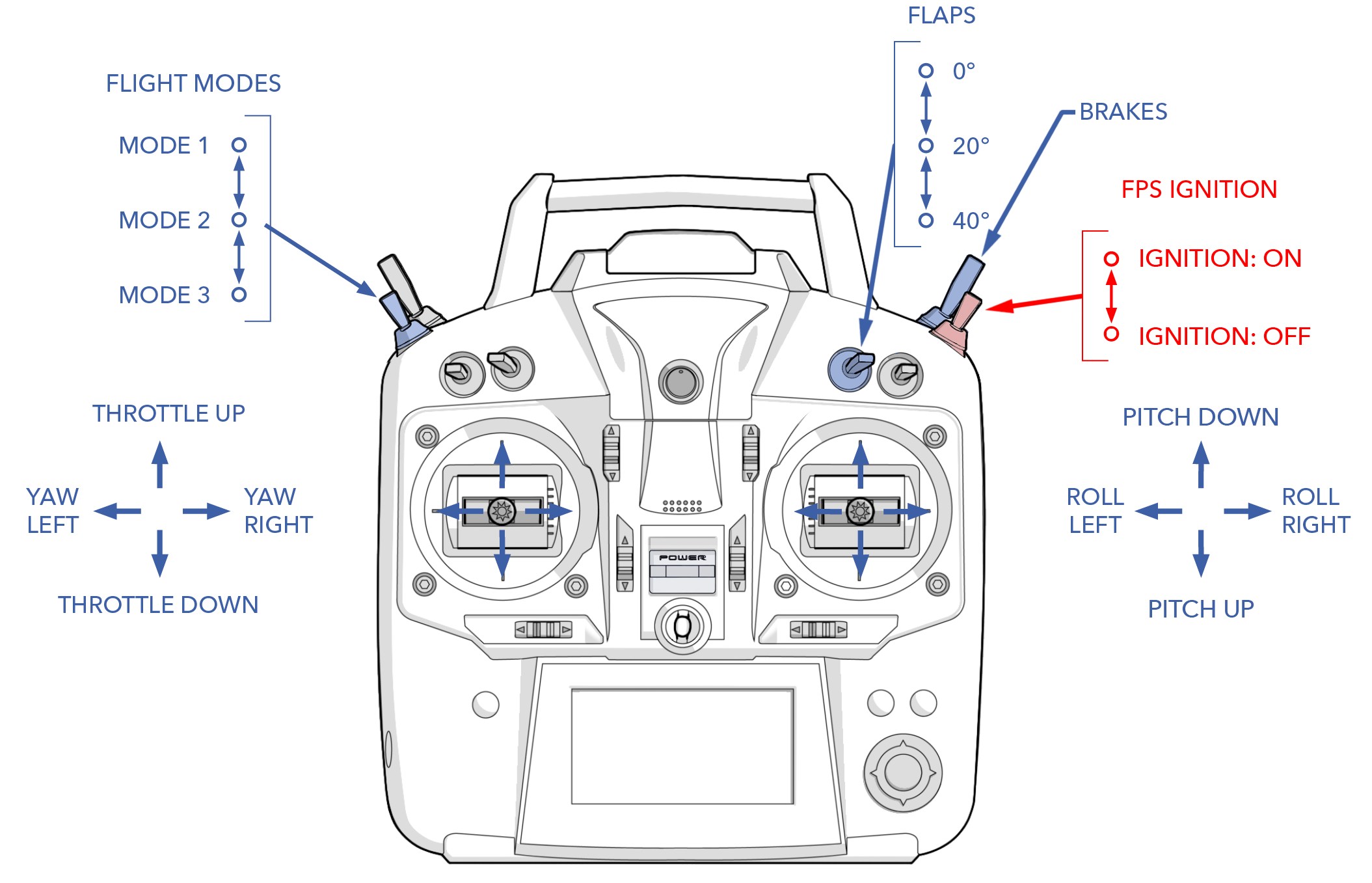IP Radio
One option for aircraft configuration utilizes an IP radio for control, telemetry, video, payload data, and the hand controller. The ground radio uses omnidirectional antennas by default, but there are options for directional antennas and trackers. Ranges exceeding 100 miles are achievable.

IP Radio Specs
| Parameter | Specification |
|---|---|
| Ground Radio | Silvus 4200 or 4400 |
| Encryption | DES Standard, AES/GCM 128/256 Optional (FIPS 140-2), Suite B |
| Data Rate | up to 100 Mbps |
| MIMO | 2x2 or 4x4 |
| Power | 10W (configurable) |
| Latency | ~7ms |
| Frequency | L-Band, S-Band, other bands available |
| Antenna Options | Omni, Directional, Tracker |
Network Operations Box (NOB)
The NOB is an active power over ethernet (PoE) managed switch and an uninterruptible power supply (UPS) integrated into a transportable server rack. The NOB is used to network the ground IP radio and hand controller. The UPS will power the GCS computer, radio, and hand controller for approximately 45 minutes in the event of a mains power failure.


NOB Specs
| Parameter | Specification |
|---|---|
| POE | 16 port switch (8 port PoE+ 8 port PoE++), 380W max |
| UPS Input | 100-125VAC ± 5% |
| UPS Output | 1500W |
| UPS Runtime | ~45 minutes |
Hand Controller
The hand controller is used during the preflight to check aircraft functions. The safety pilot can also optionally fly the aircraft and change modes independent of the GCS operator. Flying with the hand controller can be useful for in-flight interventions or when the launch and recovery situation is challenging, but using the controller should strictly be reserved for the safety pilot and with limited use.
The hand controller does not require a battery and instead uses power over ethernet (PoE).
The Hand Controller does not transmit wirelessly, instead it uses the ground radio to send signals to the aircraft.

Hand Controller Specs
| Parameter | Specification |
|---|---|
| Controller | Futaba T10J |
| Input Power | 802.3af PoE |
| Protocol | IP based |